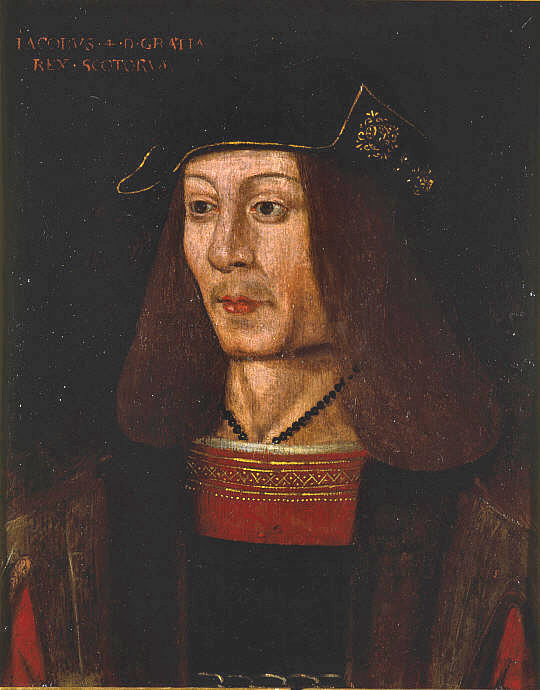|
Andrew Forman
Andrew Forman (11 March 1521) was a Scottish diplomat and prelate who became Bishop of Moray in 1501, Archbishop of Bourges in France, in 1513, Archbishop of St Andrews in 1514 as well as being Commendator of several monasteries. Early life He was probably the son of Nicholas Forman of Hutton in Berwickshire, and Jonet Blackadder.McGladdery, ''Andrew Forman'' Forman had three brothers, John and Adam who were both knights – Adam was the standard-bearer to King James IV at the Battle of Flodden and John was the king's serjeant-porter who was captured at the battle – and Robert who was dean of Glasgow cathedral. He also had two known sisters—Isabel, the second wife of Sir Patrick Home of Fast Castle and an unnamed sister whose son, John Roul, became commendator of May after Forman's death. A possible third sister, Jonet Forman the Prioress of Eklis (Eccles), is the first named in a letter of protection and respite (similar to a will) dated 28 March 1513, when Forman lists ... [...More Info...] [...Related Items...] OR: [Wikipedia] [Google] [Baidu] |
Archbishop Of St Andrews
The Bishop of St. Andrews ( gd, Easbaig Chill Rìmhinn, sco, Beeshop o Saunt Andras) was the ecclesiastical head of the Diocese of St Andrews in the Catholic Church and then, from 14 August 1472, as Archbishop of St Andrews ( gd, Àrd-easbaig Chill Rìmhinn), the Archdiocese of St Andrews. The name St Andrews is not the town or church's original name. Originally it was ''Cellrígmonaid'' ("church of the king's mounth" hence ''Cill Rìmhinn'') located at ''Cennrígmonaid'' ("head of the king's mounth"); hence the town became ''Kilrymont'' (i.e. ''Cellrígmonaid'') in the non-Gaelic orthography of the High Middle Ages. Today St Andrews has replaced both Kilrymont (and variants) as well as the older English term Anderston as the name of the town and bishopric. The bishopric itself appears to originate in the period 700–900. By the 11th century, it is clear that it was the most important bishopric in Scotland. List of known abbots There had been a monastery there since the 8th ... [...More Info...] [...Related Items...] OR: [Wikipedia] [Google] [Baidu] |
Battle Of Flodden
The Battle of Flodden, Flodden Field, or occasionally Branxton, (Brainston Moor) was a battle fought on 9 September 1513 during the War of the League of Cambrai between the Kingdom of England and the Kingdom of Scotland, resulting in an English victory. The battle was fought near Branxton, Northumberland, Branxton in the county of Northumberland in northern England, between an invading Scots army under King James IV of Scotland, James IV and an English army commanded by the Thomas Howard, 2nd Duke of Norfolk, Earl of Surrey. In terms of troop numbers, it was the largest battle fought between the two kingdoms."The Seventy Greatest Battles of All Time". Published by Thames & Hudson Ltd. 2005. Edited by Jeremy Black. Pages 95 to 97.. After besieging and capturing several English border castles, James encamped his invading army on a commanding hilltop position at Flodden and awaited the English force which had been sent against him, declining a challenge to fight in an open field. Su ... [...More Info...] [...Related Items...] OR: [Wikipedia] [Google] [Baidu] |
Margaret Tudor
Margaret Tudor (28 November 1489 – 18 October 1541) was Queen of Scotland from 1503 until 1513 by marriage to King James IV. She then served as regent of Scotland during her son's minority, and successfully fought to extend her regency. Margaret was the eldest daughter and second child of King Henry VII of England and Elizabeth of York, and the elder sister of King Henry VIII of England. Margaret married James IV at the age of 13, in accordance with the Treaty of Perpetual Peace between England and Scotland. Together, they had six children, though only one of them reached adulthood. Margaret's marriage to James IV linked the royal houses of England and Scotland, which a century later resulted in the Union of the Crowns. Following the death of James IV at the Battle of Flodden in 1513, Margaret, as queen dowager, was appointed as regent for their son, King James V. A pro-French party took shape among the nobility, urging that she should be replaced by John, Duke of Albany, t ... [...More Info...] [...Related Items...] OR: [Wikipedia] [Google] [Baidu] |

